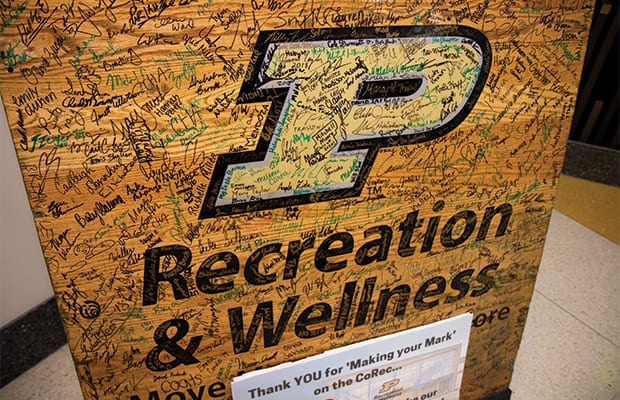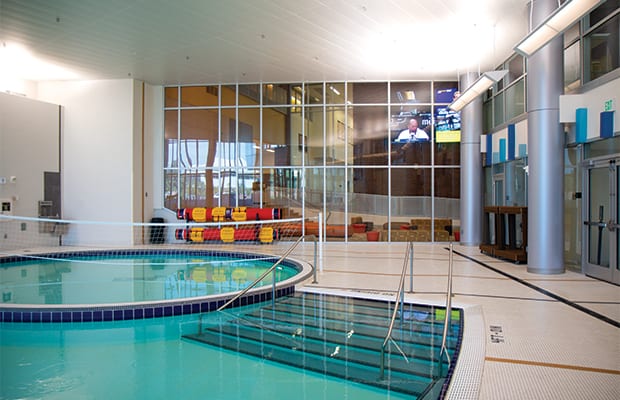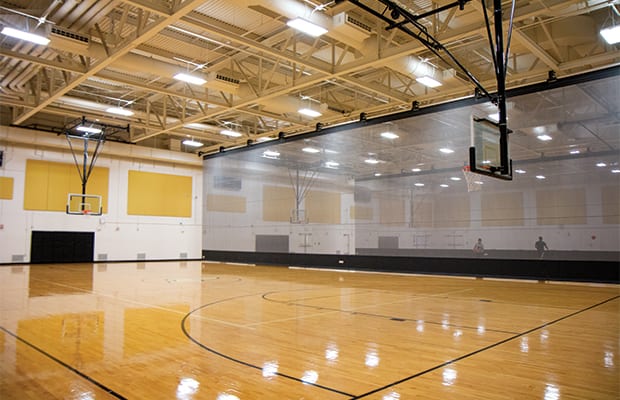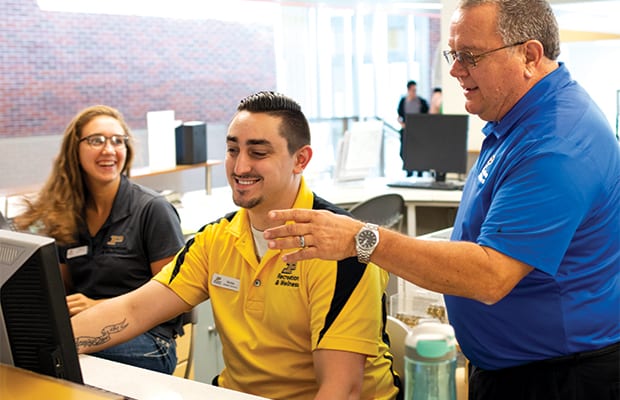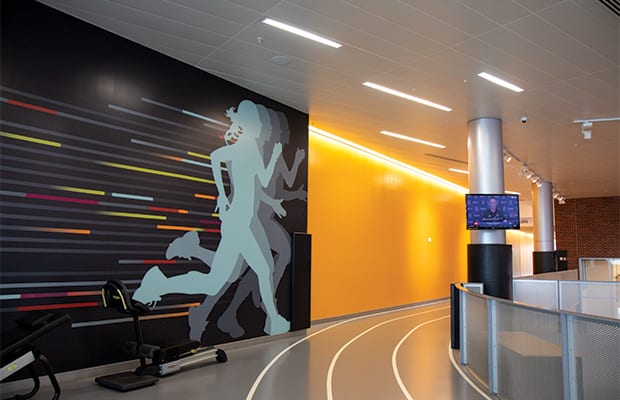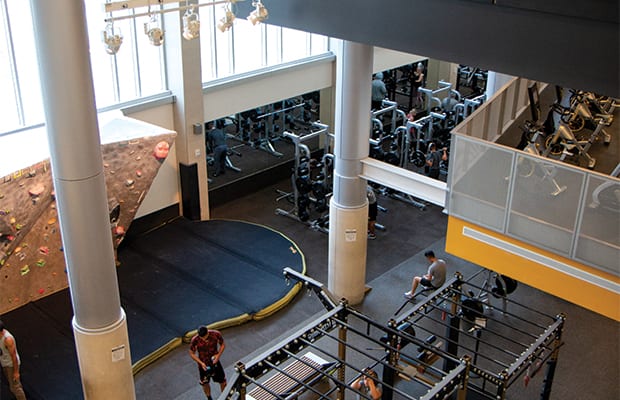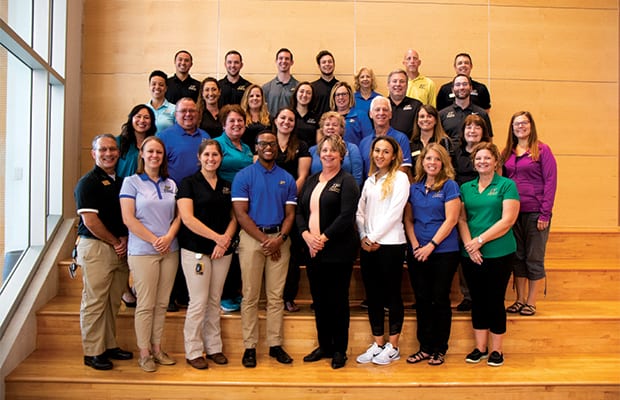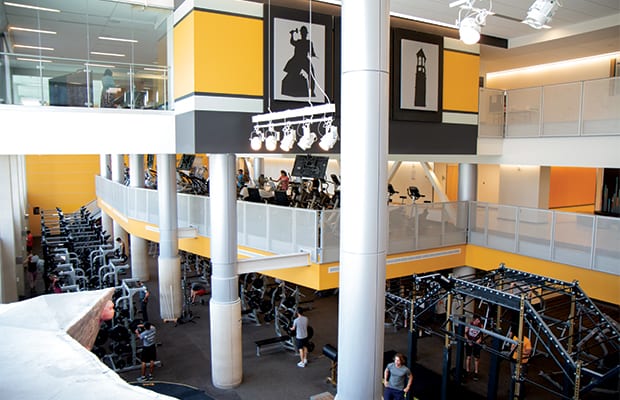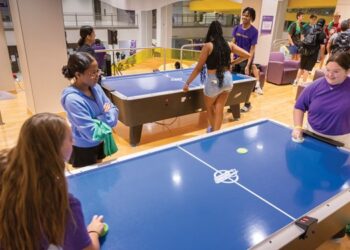In 1957, the France A. Córdova Recreational Sports Center (the CoRec) opened.
As one of the first standalone recreation centers in the country — an accolade it shares with Ohio State University — it was no surprise when Howard Taylor, the director of recreation and wellness, said the renovation was much needed. “I just can’t describe to you how out-of-date it was,” he said. “With our architects, Moody Nolan, Inc., we tried to make the spaces inviting and transparent, both internally and externally.”
The $98 million, six-year project consisted of expansion and renovation of the CoRec, Aquatic Center and TREC buildings. Together they equal 475,000 square feet of space. Fitness neighborhoods welcome users of all kinds. Taylor, who has been the director at Purdue for almost 14 years, said the goal was to find a setting where everyone would be welcomed.

But that idea goes beyond the students and users of the fitness aspect of the facility. It has also permeated into the idea of campus partnerships as a whole. From the beginning of the facility’s plans, Taylor had the idea the CoRec would be a university facility. “There’s a wide range of things a facility like this can do to support certainly students, but also the campus,” he said. “I’ve always felt like the more embedded we can be with what the campus does, the more important we become to the campus.”
That idea has been one developed over his 40 years in the industry. Whether it’s partnering with the residence halls, intercollegiate athletics, cultural centers or an engineering group, you’ll find a wide variety of users at the CoRec. In fact, it has meant a large variety of mutually beneficial partnerships for recreation and wellness at Purdue.
For example, reservations at the CoRec took off. The renovation brought about a gymnasium that offers the largest space on campus, and groups around the university noticed. Mitch Nettesheim, the senior associate director of operations, said in the old facility they would do about $20,000 per year in revenue when it came to outside reservations. This year, he guessed that same revenue stream would hit a number closer to $300,000.
In fact, the idea was to build a gym with capacity for special events. While the initial term “events” was simply geared toward the idea of a dance marathon or other recreation activity, it soon became much more. There are now multiple staff who handle the area of reservations at the CoRec due to the overwhelming response for it.
“The campus knows this facility is there to serve a lot of needs, and we’ve become a vital player in what happens on campus,” said Taylor. “It’s important not to be a siloed entity, that ‘all we do is recreation. We’re not going to let anyone else in here because we’ve got to guard this completely.’ We guard it, but we share it.”
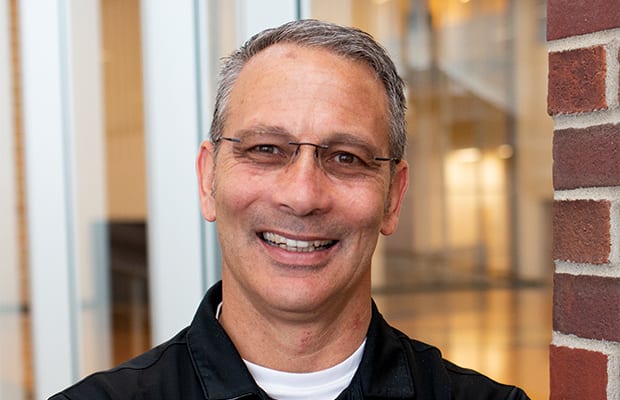
One of the largest reasons the reservation revenue stream took off was due to building relationships across campus. Nettesheim said getting out there and connecting has been essential. A recent unique partnership has been with the Union Club Hotel. The general manager reached out to Nettesheim and started a conversation about partnering to get hotel guests into the CoRec. Now, there is a discounted guest fee in place, which is another revenue stream for recreation and wellness. They are even talking about providing the Union Club Hotel’s own fitness center with the CoRec’s old equipment.
Wellness is another key word to describe recreation at Purdue. As the industry continues to trend in the area of incorporating wellness, Purdue is six years deep in its partnership.
It started when a physical therapy (PT) clinic was built into the facility, allowing Student Health to come in and run it without having to pay for the space. However, the CoRec would benefit as well. The idea was the PTs could use the CoRec’s facilities to support their patients. “What the therapists have always told me was a lot of times they teach patients what to do and then when insurance runs out they are on their own,” said Taylor. “What we were hoping was in making the transition from the physical therapy clinic into the rec center is they could show the students how to do the exercises on their own.”
Eventually, that partnership turned into something else: the department of wellness being brought under recreation. Tammy Loew, the senior associate director of wellness programs, said she was at first apprehensive about the change, wondering how they would marry the two. However, she said it’s been better than anything she could have imagined.
Through collaboration and partnerships, the students are winning in the end. Whether it’s through their mindfulness series — talks on stress reduction, mindful eating, etc. — or having their dietitian oversee the demo kitchen and student cooking staff, it’s providing students with healthy messages and programming. Focuses on mental health have also been key, as more and more students are coming onto campus with such struggles.
“Now we have these other opportunities which really goes back to this mission for this building, which is pursuing active, healthy lifestyles for students,” said Loew. “All of that helps promote lifelong wellness and contributes to student success; it really is building that framework among our student population that we want to build.”
But in order to make all of these partnerships work and thrive, it starts with the people who run it. “If it weren’t for the leadership team we have here that’s overseeing this, I don’t think it would have been successful,” said Loew. “They were open to what we were bringing to the table and they were open with sharing with us what they could bring to the table, and they were very intentional about finding ways to marry the two.”
The success of the team has been essential for recreation and wellness at Purdue. And Taylor said the only way they’ve been able to build a successful team is through several key components: staff recognition, pitching in and strengthening relationships.
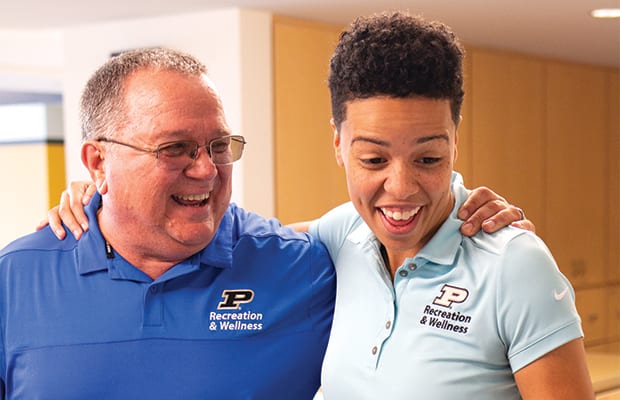
First, staff recognition. Taylor said he goes out of his way to recognize his staff, giving credit where it is due. He realizes he can’t know and do everything. “I believe we accomplish much more if my team knows I trust them and allow them to succeed,” he said. “I try to give them the resources to be successful at what they have been hired to do.”
But, he is also willing to do anything. “I’ve swept floors. I’ve mopped floors. I’ve ridden the lawn mowers when the grass needs to be cut twice a week and we don’t have enough bodies to do it,” said Taylor. “As a director you’ve got to find whatever ways to make that work happen.”
Finally, it’s essential to build a tight-knit team. At Purdue, events are hosted for the recreation and wellness team. They have gone out to the university’s trap and skeet range, experienced the high-challenge course complete with a cookout, and spent a day on the river with Purdue’s crew team. “You can’t pay for the kind of enthusiasm those kinds of things do for a staff,” he said.
As the CoRec has evolved since 1957, both in look and feel, it’s not looking to slow down anytime soon. Staff, partnerships and wellness are only strengthening as student needs are being met in more and more ways. Plus, the idea of collaboration has remained strong as Purdue Recreation and Wellness heads into the future. Taylor said the promotion of the CoRec as a campus facility supporting the business of campus has been an attempt to make the department indispensable to the university.
And that is changing how the department is viewed as a whole. “We’re redefining what campus recreation and wellness is, at least to the Purdue community,” said Nettesheim.



